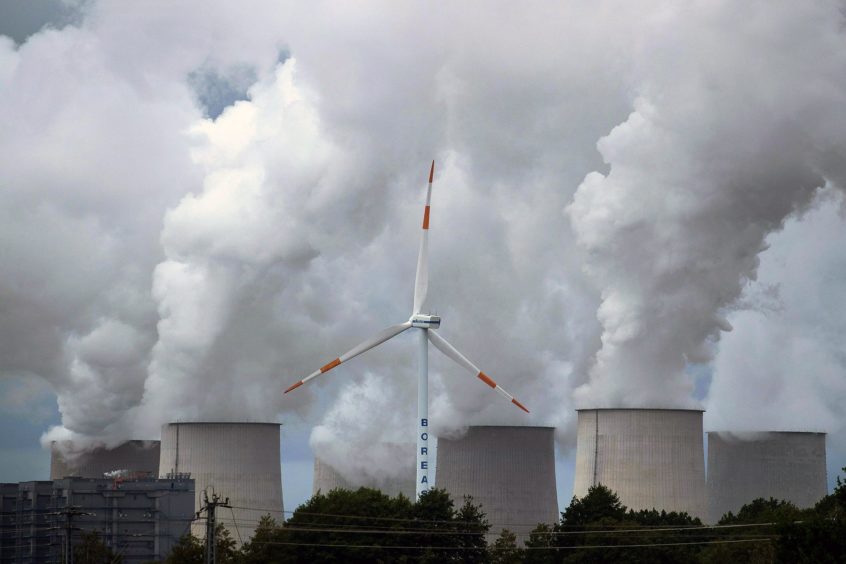
During the past four years, Vittorio Borelli spent about 50 million euros ($58 million) buying equipment for his company’s ceramic-making facility in northern Italy. New gas-fired kilns slashed the time necessary to heat porcelain at more than 1,000 degrees Celsius, saving energy and reducing carbon emissions.
But the chief executive officer of Fincibec SpA has doubts about how sustainable that strategy is after the European Commission said it intended to impose stricter emissions controls. That means Borelli may have to spend more money in coming years to cover the costs of pollution from his business.
“That’s money that will be stolen from our ability to invest more in new energy-efficiency equipment,” Borelli said. “We are very worried about it.”
As government officials sort out the particulars of implementing ambitious climate goals, executives at European companies are scurrying to sort out how to pay for meeting them. More-advanced technologies are expensive, and the prices of permits to emit greenhouse gases are nearing record highs just as the global economy shrivels because of the Covid-19 pandemic.
And with the commission’s new proposal to cut emissions 55% by 2030, compared with the current goal of 40%, the price of carbon may get significantly more expensive. The challenge for policy makers will be to find a balance between their climate ambitions and companies’ abilities to invest in themselves, said Marco Mensink, director general of the European chemical industry association Cefic.
“Rising carbon prices will further increase the pressure to improve efficiency, leading to fuel switch as they get higher,” Mensink said. “Eventually, the ever-rising carbon prices lead to a situation where companies’ margins are so seriously impacted they don’t have the money to invest in further breakthroughs.”
Europe’s cap-and-trade system already drove significant emissions cuts in the power sector, with carbon-dioxide discharges decreasing 15% last year as renewables replaced coal. Yet the green shift is more difficult for heavy industry, requiring significant investment in new technologies and massive uptake of cheap, clean energy. Carbon-dioxide discharges from industrial sectors dropped just 2% in 2019 from the year before.
The Emissions Trading System was set up 15 years ago to reduce heat-trapping CO2 at the lowest possible cost. It imposes pollution caps on companies, allowing those who reduce emissions faster to sell unneeded credits for a profit. Prices are set by the market.
For much of the last decade, it was cheap to pollute because the 2008 financial crisis suppressed industrial output and helped generate a glut of carbon permits. The price languished at around 5 euros per ton.
A 2017 reform to reduce excess permits started pushing prices up, and they reached a 14-year high of 30.8 euros in July.
Under the new plan by the commission, the 27-nation bloc’s executive arm, the number of permits to emit CO2 would shrink faster. Carbon prices even could double within the next decade, according to BloombergNEF, and that’s fanning concerns by big energy users about their financial standing and ability to compete during the worst recession in generations.
“In certain areas of the industry, this will be quite a heavy burden,” commission Executive Vice President Frans Timmermans said Sept. 17. “I’m more than willing to address certain specific issues with parts of the industry.”
The European Commission wants to make the Green Deal an engine of economic recovery, allocating 225 billion euros for projects limiting climate change.
And to ensure fairness against foreign competitors, the commission plans to propose a climate levy on goods brought into the EU. The border adjustment would penalize imports of certain emissions-intensive products, such as steel and cement. Details, including possible exemptions for the poorest nations, may come next year.
The risk is that the tool could trigger conflicts with EU trading partners and would require the bloc to scrap industry protections such as the free emissions permits given to some companies. Manufacturers oppose any changes to the current system of handouts.
Those free permits, which shield heavy industry from rising carbon prices, may be slowing decarbonization, according to the Carbon Market Watch environmental group.
“Being able to clean up these big polluters is a ‘make-or-break’ for the EU Green Deal,” said Agnese Ruggiero, policy officer for the Brussels-based nongovernmental organization. “We need resolve and political will to make the clean transition happen.”
The pool of free permits is set to shrink as well starting next year, making the expected price increases potentially more painful. A company’s share depends on carbon-efficiency benchmarks that will become stricter because of technology improvements.
“The more we reduce free allowances, the higher prices go, the higher the incentive to outsource production abroad,” said Otmar Hubscher, CEO of Portuguese cement maker Secil, a division of Semapa-Sociedade de Investimento e Gestao SGPS SA.
Hubscher had a surplus of permits this year and decided to sell some as the market neared its peak. His company was awarded more than 9 million free permits in recent years, according to BNEF.
Now he expects free allocations to decline so much that his company, like most competitors, will have to buy allowances after 2025.
The trading system was designed to allow lower prices if industrial output slowed, but this time a drop in prices at the beginning of the coronavirus-induced crisis quickly reversed. The cost almost doubled since falling to around 14 euros on March 23 on the ICE Futures Europe exchange.
Expectations of policy tightening in the Green Deal era prompted some industrial companies to hoard permits. The market also attracted more short-term investors, including hedge funds.
“The industry has never faced such uncertainty about carbon before, and that’s during a period of pandemic that’s already dealt a serious blow,” said Jahn Olsen, a London-based analyst for BNEF. “One thing is certain: carbon prices are going from being a compliance issue to a strategic risk.”
Recommended for you
